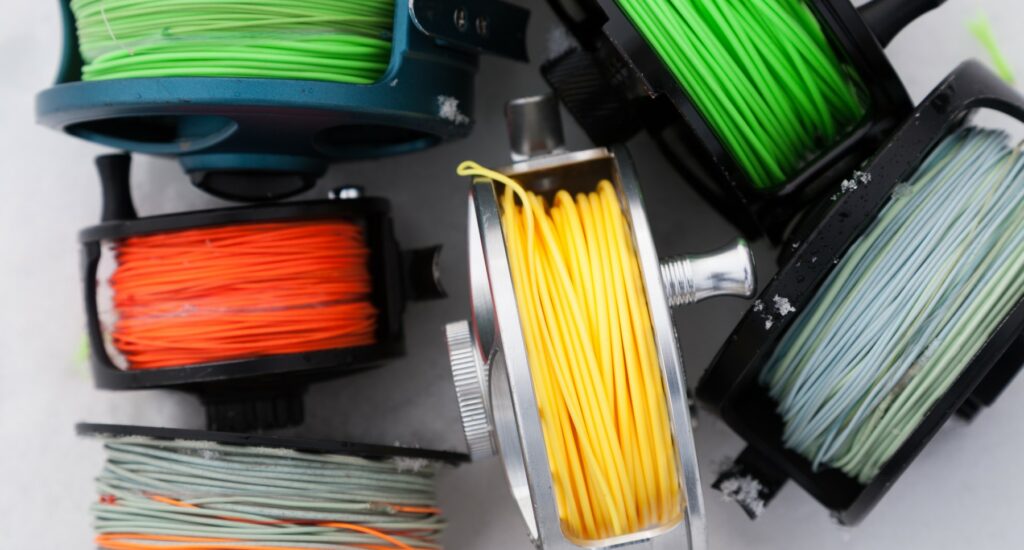
Before we explore ways to save with Fly Reel Deals and other Fishing promo codes, let’s dive into the options you may consider for your real, which is a key piece of Fly Fishing gear. When it comes to fly fishing, there are three major types of reels to choose from: baitcasting reels, spinning reels, spincast reels. The reel you select will be determined by your personal tastes and waters you are fishing.
Baitcasting Reels
Baitcasting reels are more precise and controllable than other reels. They are better prepared to manage lines weighing ten pounds or more. One thing to keep in mind while using a baitcasting reel is that when the spool starts to spin faster than the line being played out, it has a propensity to snarl or fight back. This is especially true when casting into the wind.
Baitcasting reels contain a magnetic braking system to minimize backlashes, but you’ll want to rely more on the spool tension adjustment knob, which is normally situated immediately beside the handles. By holding the rod straight and disengaging the spool, you can adjust the spool tension knob for each lure. Loosen the tension until the lure begins to drop, then tighten the spool a little more. You’ll disconnect the spool and then hold it firmly with your thumb while casting the reel. Simply relax the strain on the lure when you want it to move ahead. After some practice, you’ll be able to adjust the spool’s speed and improve your accuracy.
Spinning Reels
Spinning reels are those that have a stationary spool. A mechanism called a “bail” spins around the spool, spinning the line onto it. Spinning reels can handle any line size, but more experienced fly fishermen will use them for lures weighing less than ten pounds. When casting into the wind, spinning reels perform somewhat better than baitcasting reels. The inherent twisting of the line, which causes tangles and knots, is one downside of using a spinning reel. The greatest thing you can do if your line becomes twisted is to replace it with a fresh one. Put the spool in a glass of water for about 24 hours before you go fishing to give it a chance to soak and prevent tangles.
To cast the spinning reel, use one hand to hold the rod’s handle, making sure the spinning reel is on the bottom side with your middle finger in front of the reel’s “foot.” Slowly open the bail and draw the line below your index finger’s first knuckle. Pull your index finger into a straight posture to release the line. Allowing the line to unwind down your index finger as close to the spool as feasible allows you to regulate how far you cast the line. Simply press your finger against the spool’s lip to bring the line to a halt.
Spincast Reels
“Push button” reels are another name for spincast reels. They have a closed-face design and are very simple to operate. They are virtually tangle-proof and may be cast in smooth, long arcs without twisting. While a pick-up pin revolves around the spool, the main portion of the spool is wrapped in a covering and remains stationary. When purchasing a spincast reel, make sure you don’t settle for the cheapest option because you want to pay for quality. A spincast reel is a good choice for many newbie fly fishermen.
All you have to do to cast the spincast reel is press and hold the push button. When you want your lure to move ahead, you’ll let go of the button. Most spincast reels can handle any weight of lure or line size.
Final Thoughts – Save on Fishing Gear
Regardless of your preference, it is foolish to pay full price for fishing gear! Be sure to take advantage of Fly Fishing Cashback and other amazing Hunting and Fishing Promo Codes, including Fly Reel Deals, when you shop for any equipment you may need for the outdoors!

